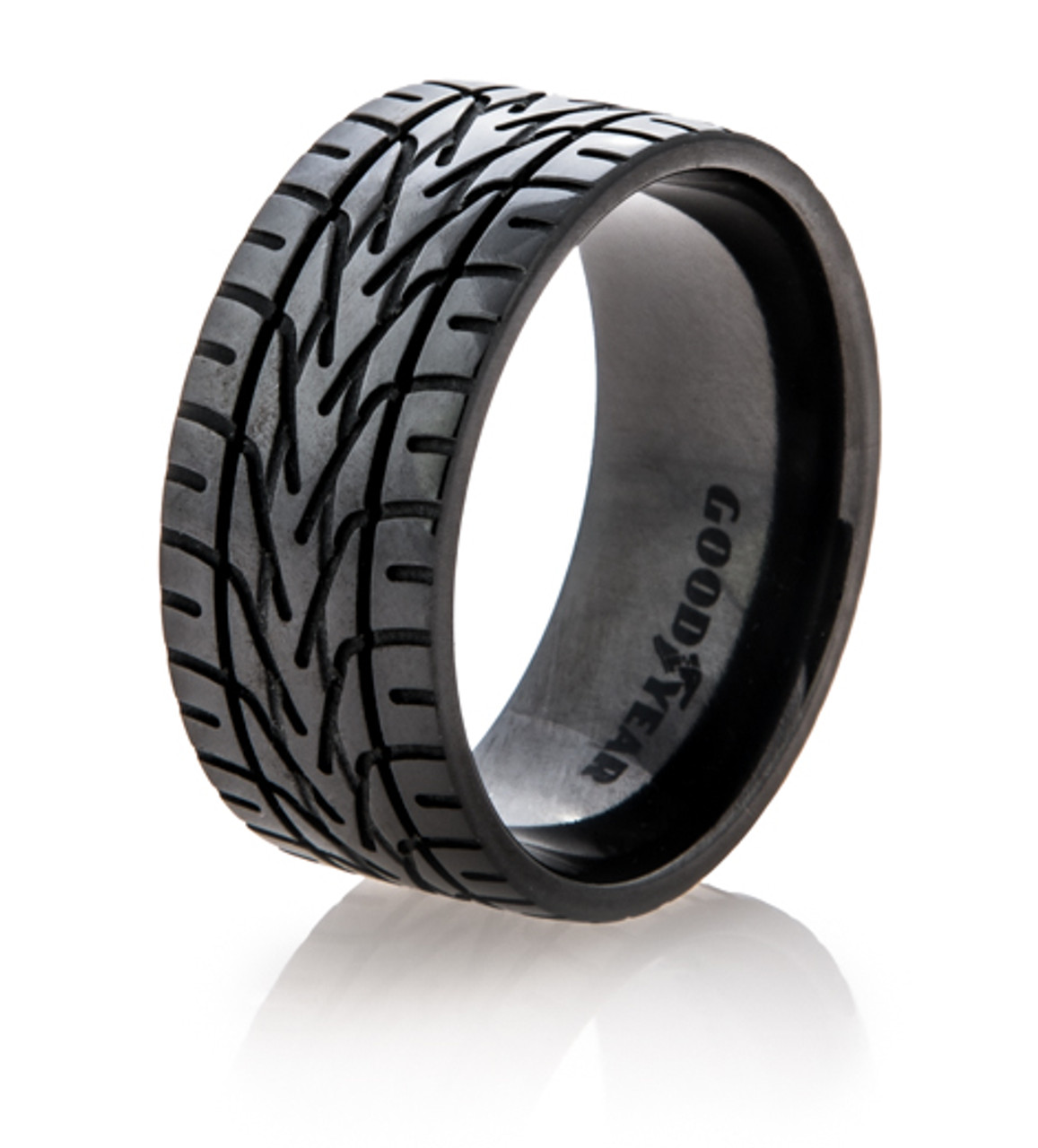May be a mean sounding question, but I’m genuinely wondering why people would choose Arch/Endevour/whatever (NOT on steam hardware) over another all-in-one distro related to Fedora or Ubuntu. Is it shown that there are significant performance benefits to installing daemons and utilities à la carte? Is there something else I’m missing? Is it because arch users are enthusiasts that enjoy trying to optimize their system?
It’s the IKEA effect. You tend to like something more if you built it yourself.
spoiler
… and you understand it more when you build something by yourself, so it’s easier for you to fix it when it’s broken.
you understand it more when you build something by yourself, so it’s easier for you to fix it when it’s broken.
For me, this is a big selling point. Instead of trying to figure out why someone did something or wrestling with their decisions, I know what I did, why I did it, and if necessary, and I can change it.
In a perfect world, yes.
In reality, i knew what i did and why i did it, two years ago, after which i never had to touch it again until now, and it takes me 2 hours of searching/fiddling until i remember that weird thing i did 2 years ago…
and it’s still totally worth it
Oh or e.g. random env vars in .profile that I’m sure where needed for nvidia on wayland at some point, no clue if they’re still necessary but i won’t touch them unless something breaks. and half of them were probably not neccessary to begin with, but trying all differen’t combinations is tedious…
i knew what i did and why i did it, two years ago, after which i never had to touch it again until now
Hahaha, true. This is why I try to keep as many notes as possible, leave lots of comments, add READMEs, links, and otherwise document what I did and why.
It’s not perfect, it’s often tedious, and I don’t always do it, but when I come back 2 years later wondering why I set some random option, it’s pretty nice having at least some hint.
I wanted a rolling release distro, and Arch has an amazing wiki. That’s why I chose it. Though I ultimately moved on to CachyOS (Arch based), because it’s a lot more pre configured than Arch.
People swear there’s secret sauce in the Cachy kernel too.
Placebo is a hell of a phenomenon though lol
There are some benefits, but its situational and only affects you while your hardware is very new. Eventually the base kernel catches up in most cases.
I’ve observed some notable improvements when benchmarking with the CachyOS kernel on NixOS via Chaotic’s Nyx using moderately old hardware:
https://programming.dev/post/38304031
Haven’t yet tried replicating the same comparison on newer hardware, but would be interested to see what others have tested. Any observations?
Because it is less trouble.
I read comments here all the time. People say Linux does not work with the Wifi on their Macs. Works with mine I say. Wayland does not work and lacks this feature or this and this. What software versions are you using I wonder, it has been fixed for me for ages.
Or how about missing software. Am I downloading tarballs to compile myself? No. Am I finding some random PPA? No. Is that PPA conflicting with a PPA I installed last year? No. Am I fighting the sandboxing on Flatpak? No. M I install everything on my system through the package manager.
Am I trying to do development and discovering that I need newer libraries than my distro ships? No. Am I installing newer software and breaking my package manager? No.
Is my system an unstable house of cards because of all the ways I have had to work around the limitations of my distro? No.
When I read about new software with new features, am I trying it out on my system in a couple days. Yes.
After using Arch, everything else just seems so complicated, limited, and frankly unstable.
I have no idea why people think it is harder. To install maybe. If that is your issue, use EndeavourOS.
yay! Everything is up to date and working better than ever. Manjaro and Endeavour seem okay, too. Sounds like SteamOS 3 will be Arch-based, which would be great news!
Oh, also, AUR is life. And worth mentioning, KDE Wayland, NVidia 3090, Pipewire, and UKI generation. 👌
SteamOS 3 is arch based but that doesnt mean its anything like arch. It builds from a snapshot of arch and ships that to users as an immutable. So it will be extremely out of date compared to arch.
SteamOS already is Arch based.
Wayland is a great example.
Debian user? You may have spent the last two years complaining that Wayland is not ready, that NVIDIA does not work, and that Wayland is too focussed on GNOME. You may move to XFCE if GNOME removes X11 support.
Arch user? Wayland is great and Plasma 6 works flawlessly. There have not been any real NVIDIA problems in a year or two. Maybe you have been enjoying COSMIC, Hyprland, or Niri.
I have been using Plasma 6 on Wayland on Debian for way longer than 2 years with no issues.
Awesome.
Not installing Plasma from the default repos on Debian Stable though obviously.
When I say “Debian”, I mean “Debian Stable” which is what I think most people mean when they Debian without qualification.
That’s ok but it’s a bit cheeky to compare something meant primarily to be used as a stable system against a rolling release.
Everything I wanted to say in a single comment.
It really just werks™With how much talk of breaking your install goes around, I assumed it would be a challenge. I run pacman -Syu almost every time I update lmao.
On occasion I have broken it to the point that I needed to chroot from live USB, but I just chroot and sudo pacman -Syu a couple of hours later and everything sorts itself out. And even if that sounds like a hassle, I can tell you every issue was hardware, I was running endeavor on a USB (not a live env) which is not something I would recommend, because pacman degrades flash memory integrity very quickly, and the only other times I broke it badly enough had to do with nvidia drivers
Is my system an unstable house of cards because of all the ways I have had to work around the limitations of my distro? No.
Honestly, house of cards is a good analogon for the whole boot chain.
- It’s amazingly stable even though it’s a rolling release.
- Up to date.
- Maintained by many many knowledgeable people.
- Arch Wiki
- 99% of software you need is packaged, and then there’s AUR too.
That’s about it, but its my daily driver on desktop and laptop.
I think another factor for some is that it’s a community-driven project rather than a product with corporate backing. This is also a big reason why some use Debian over Ubuntu LTS
Funnily enough, I thought like you and was rocking Debian and various derivatives for years. Then one day, for some stupid reason (an out-of-date library for a side project in the Debian repo) and out of curiosity I tried arch.
Honestly have not looked back since for a bunch of reasons.
First, the package manager (pacman) is just awesome and extremely fast. I remember quickly ditching fedora in the past because, in part, of how goddamn slow dnf was.
Then, it’s actually much lower maintenance than I’d initially believed. I maybe had to repair something once after an update broke, and that was expected and documented so no problem there. Plus the rolling release model just makes it easier to update without having version jumps.
Talking of documentation, the wiki is really solid. It was a reference for me even before using arch anyways, so now it’s even better.
People also tend to value the customisability (it is indeed easier in a sense), the lack of bloat (like apps installed by default that you never use), and the AUR.
And, to be fair, a good share of people are probably also just memeing to death.
So I don’t know whether you’re missing something, it depends what you think Arch is like. If you believe it to be this monster of difficulty to install, where you essentially build your own system entirely etc etc… then yeah, you’re missing that it’s become much simpler than this. Otherwise if having more up-to-date software, easier ways to configure things and a rather minimal base install so you can choose exactly what you want on your system does not appeal to you, then likely arch is not going to be your thing.
dmf does way better conflict resolution though. In Arch you often have to clean up after pacman.
In the AUR maybe. I certainly have had to trim lots of old electron and other bloat.
My favourite package manager is APK 3. No clean-up required there almost by definition.
So you can tell people you use Arch btw
Some people might think you are joking, but it’s actually true
Is it shown that there are significant performance benefits to installing daemons and utilities à la carte?
No, not really.
Is it because arch users are enthusiasts that enjoy trying to optimize their system?
This is IMHO the most important aspect. The thing they’re trying to optimize isn’t performance, though, it’s more “usability”, i.e. making the system work for you. When you get down to it and understand all the components of the OS, and all the moving parts within, you can set it up however you prefer and then combine them in novel ways to solve your tasks more quickly.
This is the most important thing. Over time, you develop opinions about software and methods of solving problems. I have strong opinions on how I want to manage a system, but almost no opinions on flags I want to switch when I compile software. This is why I’m on arch not gentoo. I’m sure I’ll make the leap eventually…
Before I switched back to Arch for my daily driver, I’d frankensteined my Fedora install on my laptop to replace power management, all the GUI bits, most of the networking stack and a fair chunk of the package system. Fedora, and Gnome in that case is opinionated software. That’s a good thing as far as I’m concerned, having a unified vision helps give the system direction and a unique feel. These days, I have my own opinions that differ in some ways from available distros.
I wanted certain bits to work a certain way, and I kept having to replace other parts to match the bits I was changing. When you ask the question, can I swap daemon X out for Y, the answer on fedora was, sure, but you’ll have to replace a, b and c too, and figure out the rest for yourself. Good luck when updates come along.
The answer on arch is, yeah, sure, you can do that - and here’s a high level wiki naming some gotchas you’ll want to watch out for.
I’ve also reached a stage in my computer usage that I don’t want things to happen automatically for me unless I’ve agreed them or designed them. For example, machines don’t auto-mount usb drives, even in gui user sessions, or auto connect to dhcp. I understand what needs to be done, and do it the way I want to do it, because I have opinions on networking and usb mounting.
My work laptop is a living build that I just keep adding to and changing every day. Btrfs snapshots are available for rollback…
I’ve got two backup machines - beelink mini me’s running reproducible builds created using archinstall. It’s running on internal emmc, and they have have a 6 disk zfs raidz2 on internal nvme drives, all of which are locked behind luks encryption,with the keys in the fTPM module, without the damn Microsoft key shim. On is off site. Trying to get secureboot working on Debian was an exercise in frustration.
I’ve modified a version of that same build for my main docker host on another mini PC.
My desktop runs nixos, but will be transfered to arch next rebuild.
I’ve got a steamdeck, which runs an arch based distro.
I used to run raspberry pi’s on arch because the image to flash the SD cards used to be way smaller than what was offered by the default pi is.
That’s all using arch. It’s flexible, has the tool sets I need, and almost never tells me ‘No, you can’t do that’.
My desktop runs nixos, but will be transfered to arch next rebuild.
That’s interesting; any particular reason? I went the other way around (Arch for multiple years -> Gentoo for a year or so -> NixOS for over a decade now), and never looked back.
I thought about this for a long while, and realised I wasn’t sure why, just that most of my work has gravitated towards Arch for a while.
Eventually, I’ve decided the reason for the move is because of three specific issues, that are really all the same problem - namely I don’t want to learn the nix config language to do the things I want to do right now.
I’ve read lots of material on flakes, even first modified then wrote a flake to get not-yet-packaged nvidia 5080 modules installed (for a corporate local llm POC-turned-PROD, was very glad I could use nix for it!) I still just don’t really get how all the pieces hang together intuitively, and my barrier is interest and time.
Lanzaboote for secure boot. I’m going to encrypt disks, and I’m going to use the TPM for unlocking after measured uki, despite the concerns of cold-boot attacks, because they aren’t a problem in my threat model. Like the nvidia flake, I don’t really get how it hangs together intuitively.
Home management and home-manager. Nix config language is something I really want to get and understand, but I’ve been maintaining my home directory since before 2010, and I have tools and methods for dealing with lots of things already. The conversion would take more time than I’m prepared to devote.
Most of the benefits of nix are things I already have in some format, like configuration management and package tracking with git/stow, ansible for deployment, btrfs for snapshots, rollback and versioning. It’s not all integrated in one system, but it is all known to me, and that makes me resistant to change.
I know that if I had a week of personal time to dig in and learn, to shake off all the old fleas and crutch methods learned for admin on systems that aren’t declarative, I’d probably come away with a whole new appreciation for what my systems actually look like, and have them all reproducible from a readable config sheet. I’m just not able to make that time investment, especially for something that doesn’t solve more problems than I’ve already solved.
you can set it up however you prefer and then combine them in novel ways to solve your tasks more quickly
Can you think of a quick example, out of curiosity?
For context, I’m using NixOS, not Arch, but it’s a similar enough idea. I have a tiling/tabbed WM configured just the way I like it, and a window switcher thingy, and it makes juggling hundreds of windows really easy and quick. Combined with a terminal-based editor, a custom setup for my shell, and direnv for easy environment switching, I can be switching between a dozen different projects within a single day (sadly a requirement for my work right now).
Whenever I look at how my colleagues with KDE/Gnome are managing their workflows, it makes me appreciate the work I put into my setup a lot.
Also, I have a whole bunch of shell aliases and scripts for tasks I do often.
Sure, you can configure any distro to do that, but things like Ubuntu or Fedora would get in the way. At some point, when you want to choose (or even write) every component of the system and configure it yourself, it’s easier to just build from scratch rather than start with a lot of pre-configured software and remove parts.
The more you want it to work your way, the less you want a prebuilt solution, and the more you want a rock solid package management system and repo setup. Debian derivatives work in a pinch, or for a server, not so great for a PC you want to do a lot of things on.
I think for many people, whether they’re tinkerers or programmers or whoever, enjoy the freedom that comes with Arch.
I don’t understand why Arch is associated with troubles. It was more complicated to fix my issues with Fedora and I don’t like Ubuntu default choices. Having the desktop that I like is much easier with Arch and its derivatives.
Ease of use.
I’ve run the same CachyOS partition for 2 (3?) years, and I don’t do a freaking thing to it anymore. No fixes, no tweaking. It just works.
…Because the tweaks and rapid updates are constantly coming down the pipe for me. I pay attention to them and any errors, but it’s all just done for me! Whenever I run into an issue, a system update fixes it 90% of the time, and if it doesn’t it’s either coming or my own stupid mistake.
On Ubuntu and some other “slow” distros I was constantly:
-
Fighting bugs in old packages
-
Fighting and maintaining all the manual fixes for them
-
Fighting the system which does not like me rolling packages forward.
-
And breaking all that for a major system update, instead of incremental ones where breakage is (as it turns out) more manageable.
-
I’d often be consulting the Arch wiki, but it wasn’t really applicable to my system.
I could go on and on, but it was miserable and high maintenance.
I avoided Fedora because of the 3rd party Nvidia support, given how much trouble I already had with Nvidia.
…It seems like a misconception that it’s always “a la carte” too. The big distros like Endeavor and Cachy and such pick the subsystems for you. And there are big application groups like KDE that install a bunch of stuff at once.
This! I after two years of Debian out of habit from the past, I switched to cachyOS last year and am pretty happy with it. Completely agree that updates feel easier to manage (so far).
However, I guess hygiene also plays a role here: dont “try” multiple audio drivers and this sort of things
Yeah. I would massively emphasize this too.
Don’t mess around.
Especially don’t mess around with AUR. Discrete packages are fine, but AUR tweaks that mess with the system are asking for trouble, as they have no guarantee of staying in sync with base Arch packages.
-
My main reason is, it’s not a dependengy hell. If I want to build software, I don’t have to go through 5 iterations of being told something is missing, figuring out what that is (most annoying part), installing that and retrying. On Arch-based distros, it’s 2 or less, if it even happens.
Also, AUR.
Other points include
- Small install (I use archinstall though, because more convenient.)
- rolling release.
- Arch wiki
My installs never broke either, so it doesn’t feel unstable to me.
I like it more than ther distros because
- Debian is a dependency hell, otherwise fine. Older packages. I still use raspian though.
- Fedora has too much defaults that differ from my preferences. I don’t want btrfs, I don’t want a seperate home partition, dnf is the only package manager that selects No by default. dnf is also the slowest package manager I’ve seen. Always needs several seconds between steps for seemingly no reason at all. Feels like you can watch it thinking “Okay, so I’ve downloaded all these packages, so they are on the disk. That means - let’s slow down here and get this right - that means, I should install what I downloaded, right. Okay that makes sense, so let’s do that. Here we go installing after downloading”. I also got into dependency hell when trying something once, which having to use dnf makes it even worse. - I guess you can tell I don’t like Fedora.
- Love the concept of NixOS, don’t like the lack of documentation
- Debian is a dependency hell, otherwise fine.
I agree on the older packages (I don’t need cutting edge), but what do mean about “dependency hell”?
Side note, I laughed a bit at this, I haven’t heard the term “dependency hell” since the old rpm Redhat days before yum.
TL/DR it’s about boulding software yourself. I’m describing the process and my thoughts.
Alright, everything downloaded, let’s build this software. Oh, it fails because… wait a second, what does this mean? Okay, so I’m missing a component. This component is in - well, I don’t know. This post here - no, that’s about coding. The second thread is coding too. Oh, the third one helps. Okay, so I need to install this package.
Nice, the error message changed. Now I go through the whole loop again and - no, the post didn’t help at all, I still have the same problem.
[some hack later that I never remember]
So, the next thing - great, I cannot install it because of some incompatibility with another thing I’d like to keep on my system.
[solution differs here]
Oh, of course I don’t have everything yet, why would I? So I’m missing - nothing, the library is literally right there in this package that’s already installed, but the compiler is too stupid to find it. What’s wrong with you!?
I give up.
That’s the procedure most times when I have to compile something on Debian and there’s no prerequisites list. Dependency problems can obviously happen on Arch, but it’s not 7 iterations, it’s more like 2. Or I use an AUR Script and don’t care.
EDIT: I now see that I am repeating myself a little.
I build software manually about twice a year, and I’ll be honest, I can’t really say I’ve had that experience in many years. Whether I’m using debuild to generate a deb package or a simple make/make install, the stdout feedback points exactly to the issue 99% of the time.
Sorry you had that happen, must be frustrating.
Because it comes with a nice BTW
I never found using endeavour any more trouble than using Ubuntu or fedora, and I’ve used both in school or work so, my question back to you, why do people choose corporate coded distros like fedora or Ubuntu when easy to use, up to date and free as in freedom distros like endeavour exist?
I’m going extra silly: why do you wear bikinis when swimsuits exist? Dunno, preferences. People have them.
Yepp, from where I sit Endeavour is the best of all worlds. Plus, it’s purple.
Newer software is nice, it’s not too much trouble.
It’s a some “trouble” to install, but it’s worth it. I spend like 2-3 days getting every little thing the way I like and then I’m set for basically the life of the hardware.
That’s true for any OS install I do for myself though :)











